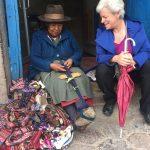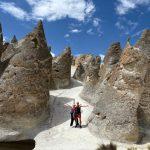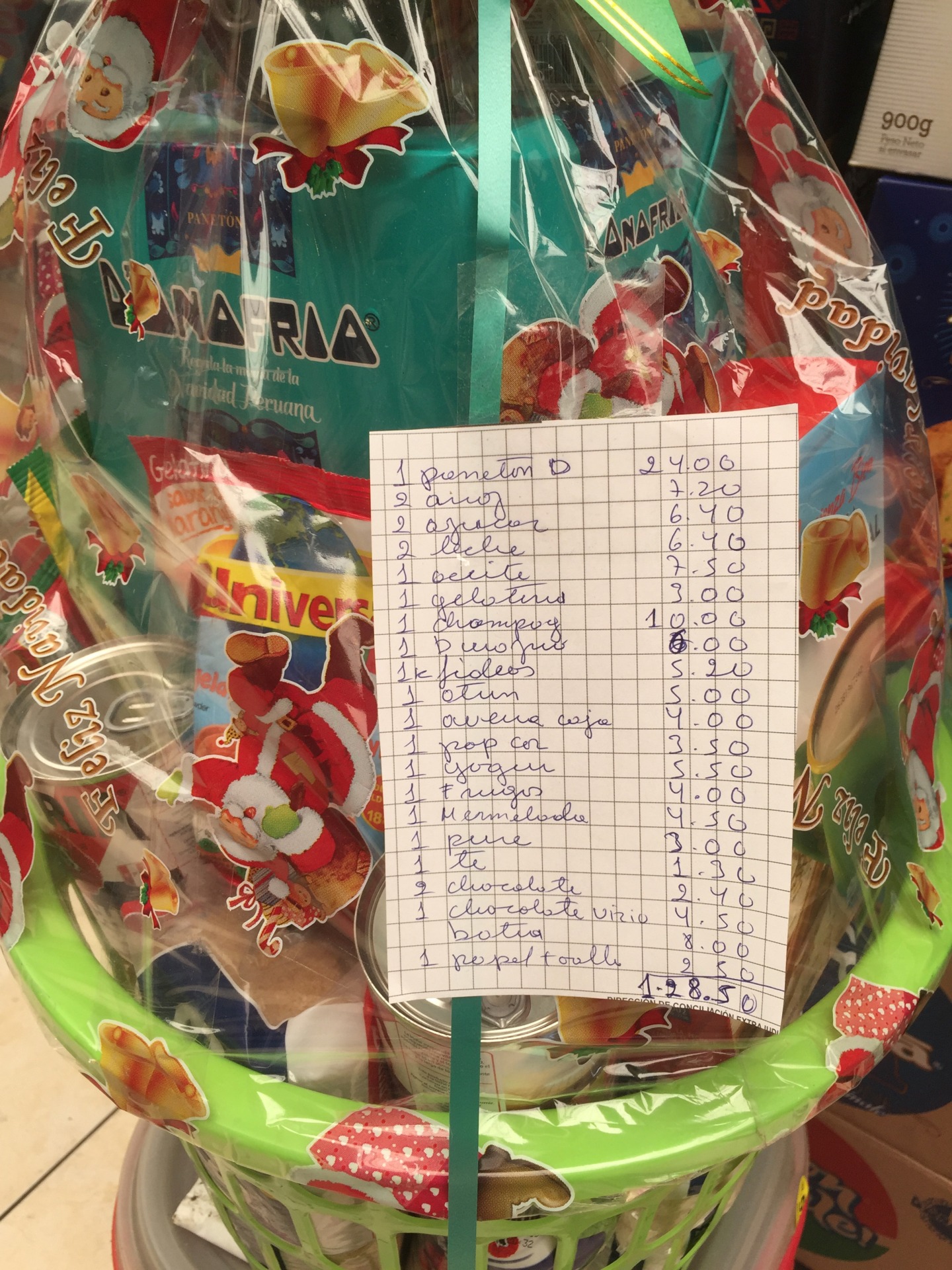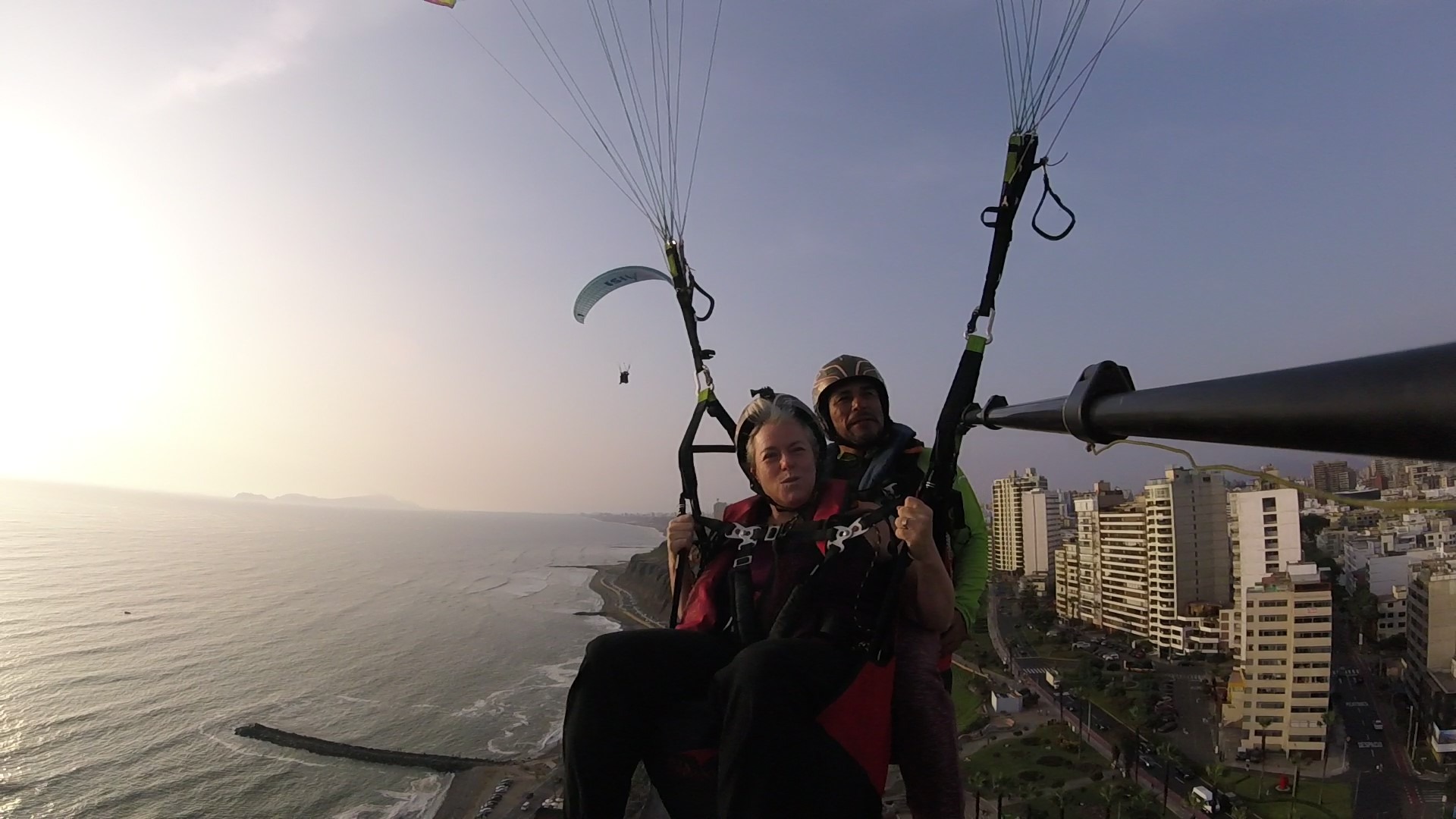I’m not doing this writeup of my Cusco trip chronologically. So if you want to read about Cusco specifically and more about some of the sites we visited, see also Part 1: 6 Essential Incan Ruins near Cusco, Peru

Our local contact/now friend, Carlos, is from Cusco, and his parents still live there, so he pressed his father into service as a chauffeur, and got a friend who is a professional tour guide to join us for one day. As a result, we got to see a lot. But even more special, we got to experience things that we wouldn’t have on our own.

How do those woven mats and alpaca clothes get made?
One of our stops on the first day was at an alpaca farm in Chinchero. They are clearly set up for tourists, but we could see that the woven items being sold at the stands were made there. We saw the animals in the fields, and watched the process as sheared wool got washed, twisted and spun into thread, dyed (with all natural, local ingredients), and we learned how it is woven.

Two things particularly impressed me in the demo. First, the “soap”. It is actually a plant root (saqta, which is apparently the root of a cassava or yucca plant). The root is grated and mixed with water. Creates a sudsy mix. Take a dirty clump of freshly sheared alpaca wool, put it in the bowl, mix it around, and, voila: the wool comes out clean and white!

Learning how to wash freshly sheared wool, using the root,, saqta.
The other was the red dye. Most of the dyes come from plants, and you can see the colour match. But for the red, our host pointed to a big cactus leaf. It had small white powdery-looking lumps on it. He picked off one of the lumps, which turns out to be a cochineal bug, crushed it in his hand, and, voila, it became a vivid red liquid.
Of course we couldn’t resist, and did buy a lovely table runner there, even though we don’t have a table to put it on when we return to Edmonton, having sold or given away almost everything before starting this adventure. Someday we’ll have a place to put it.
(This article http://cuzcoeats.com/the-people-of-chinchero-keep-inca-weaving-alive/ gives a much more detailed description of the process, if you are interested.)
Machu Picchu

What can I say? It is as amazing as it looks in all the tourist photos and videos we’ve seen over the years. And we lucked out with excellent weather, even though this is the rainy season.
The only “negative” is that the place is so full of tourists! Machu Picchu now “limits” visitors to 5600 per day, and you are only allowed to stay for four hours. You have to tour on a path that only goes in one direction. Even so, it is fully booked most of the year. In fact, to climb some of its peaks you have to buy special tickets months in advance. They also have set up multiple levels of viewing spots so everybody can take that iconic photo without other people in the way.
Pisac Ruins & Town

Anywhere you find Incan ruins you will also find terraced land. They were pros at this!
My favourite ruin was above the town of Pisac, with awesome views of the Sacred Valley. We’d already done Machu Picchu, so I knew that I could handle quite a lot of walking, even though my still-healing ankle would hurt by the end of the day. It was worth it (in both places).
Before getting to the start of the official site, we stopped and looked over the valley. This is where a lot of Peru’s wonderful produce is grown. It is especially known for its corn, and Carlos pointed out several large cornfields owned by his abuela (grandmother). He spent many summers and holidays with his grandmother in Pisac when he was a child, so he knows the area well.
As we were climbing to the top of the site, we saw a Peruvian family, also on the hike, taking pictures of each other. So we volunteered to take a group photo of all of them. Then they took ours, and we got talking. They are local farmers, but were taking a day off for a picnic. As we were chatting, the granny took some weaving out of her bag to work on. I doubt she was intending to sell anything on this family day, but we had a look at her work, and, of course, bought some more woven belts.

We decided to walk down the mountain to the town. It was further than it looked, but the views were stunning. Well worth doing.

Part of the Pisac ruins. Even though stones are missing, those that are still there are as straight and perfect as ever. Impressive!
When we got to the bottom and entered the village of Pisac we saw that it was market day.

Although Carlos hasn’t lived there in a long time, he has visited, and he was greeted by many locals who were happy to see “little Carlitos”. We joined a friend of his who was eating heartily at one of the food stalls in the market. Turns out the woman whose stall it is used to work with Carlos’ family, and she was delighted to see him.
A bowl of choclo (corn with enormous kernels) was put on the table to eat as a snack while waiting for the rest of the food, and then we were served enormous bowls of Peruvian soup. (A delicious broth, with a few potatoes of different varities, corn, rice or quinoa (not sure which), carrots, and about a ¼ of a chicken per bowl! And they offer bottomless refills. I don’t know how people here manage to eat so much! In the countryside, they are probably walking, doing physical work, and climbing steep hils/mountains a lot. I suppose that helps burn off the calories. But the portions are enormous in the cities too.)

Most of the women (and some of the men) selling in the market were in traditional outfits. One of them joined us at our lunch table. We asked about her outfit and she explained that it was the traditional pattern and hat style from her village. It seems that every village has its own designs.

Next we wandered through the charming town, meeting and greeting family and friends, including C’s mother and grandmother. We visited the inside of a couple of homes. I’m still startled by the lack of clear demarcation between indoor and outdoor space in this part of the world. (I know it exists in other warm countries too, but having grown up in Canada….)
I’m nagging Carlos to record his abuela’s story; from the little she told us, and the bits we heard afterwards, she has quite a story to tell. At 19 she married a man of 50. He owned a lot of land, and although it was not an arranged marriage, her parents were happy with it, and felt confident that he would treat her well. (Which she says he did, although we learned later that her husband fathered some 40 children by an assortment of women. She was the only one he married, but he assumed financial responsibility for all of them, and abuela even ended up doing business with some of the children he had fathered with other women.) Given the age gap, he died when C’s father was still quite young, and abuela became a successful businesswoman, acquiring farmland and city properties, supervising farmers and housebuilders. Apparently she still (at age 85) manages properties and projects.
The town of Pisac & the ruins that overlook it are starting to gain a tourist following, but if you can I’d urge you to visit soon, before it becomes overrun, the way Cusco and Machu Picchu have been. All are still well worth visiting, but I would have loved to have seen them before the tourist explosion.

Have you read Part 1: 6 Essential Incan Ruins near Cusco, Peru?





[…] Read more in Part 2: Machu Picchu & Pisac, Peru […]
[…] Machu Picchu & Pisac, Peru […]
[…] get me wrong: it is still an impressive site, and I do recommend visiting it. But, a bit like Machu Picchu, it had been built up in my mind so much from years of hearing people talk about it, that seeing […]